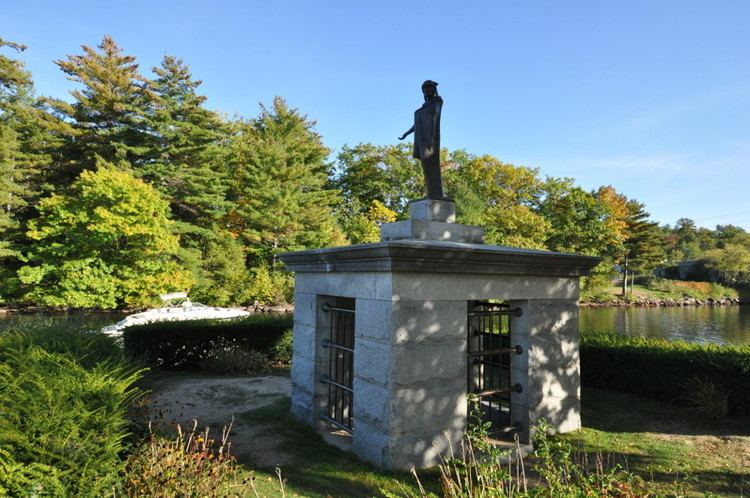Area less than one acre Address Laconia, NH 03246, USA Phone +1 603-271-3556 | NRHP Reference # 80000264 Year built 1652 Added to NRHP 28 May 1980 | |
 | ||
Website Endicott Rock State Historic Site Similar Ahern State Park, Monkey Trunks Weirs Be, Opechee Park, Androscoggin Wayside Park, Taylor Mill State Historic S | ||
Old film clip of endicott rock on lake winnipesaukee
Endicott Rock is a state park located on the shore of Lake Winnipesaukee in the Weirs Beach village of Laconia, New Hampshire. Its principal attraction is a large rock originally in the lake that was incised with lettering in 1652 by surveyors for the Massachusetts Bay Colony. The rock provides definitive evidence of one of the earliest incursions of Europeans into the area.
Contents
- Old film clip of endicott rock on lake winnipesaukee
- Lake winnipesaukee laconia new hampshire jumping off rock
- References
For many years the rock's existence was unknown, until it was rediscovered in the 19th century when the Weirs Channel was dredged. The state then undertook to protect the rock from the elements, building a pavilion over it and stabilizing cracks in the rock with iron fittings. The markings on the rock include "IOHN ENDICUT GOV", a reference to John Endecott, who was then governor of the Massachusetts Bay Colony, and the initials of the surveyors. The colony's boundaries, according to its charter, were 3 miles (4.8 km) north of the Merrimack River, and the rock was incorrectly believed by the English party to mark the northernmost head of the river (the headwaters of the Merrimack's main tributary, the Pemigewasset River, are significantly further north, but the survey party was misled by its Indian guides).
Admission to the small park is free and offers picnic facilities. (The parking fee in the immediate vicinity is $10.) Materials from the New Hampshire Division of Parks and Recreation sometimes identify the site as a historic site, and sometimes as a state park. A rectangular area surrounding the rock and its sheltering pavilion were listed on the National Register of Historic Places in 1980.
